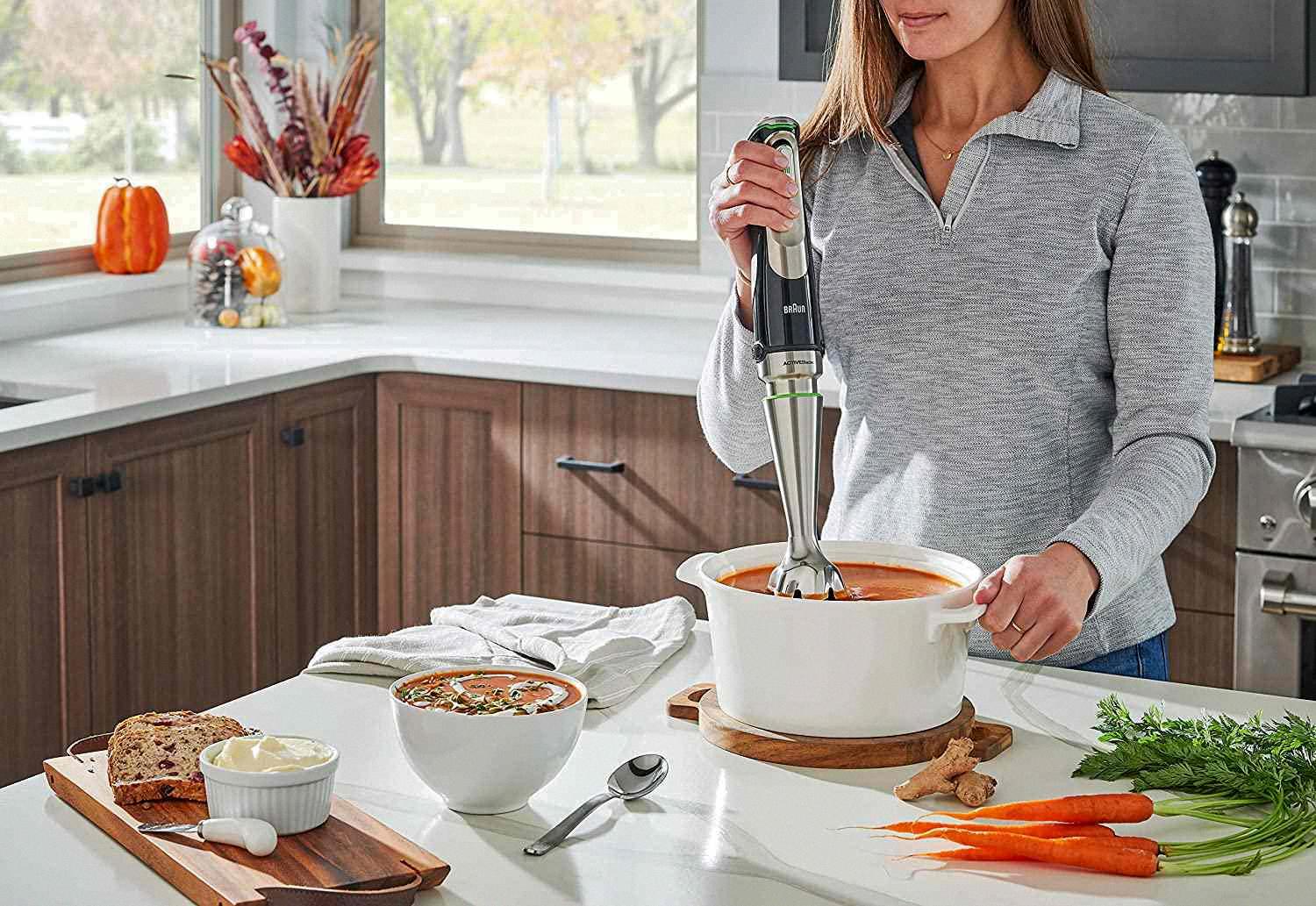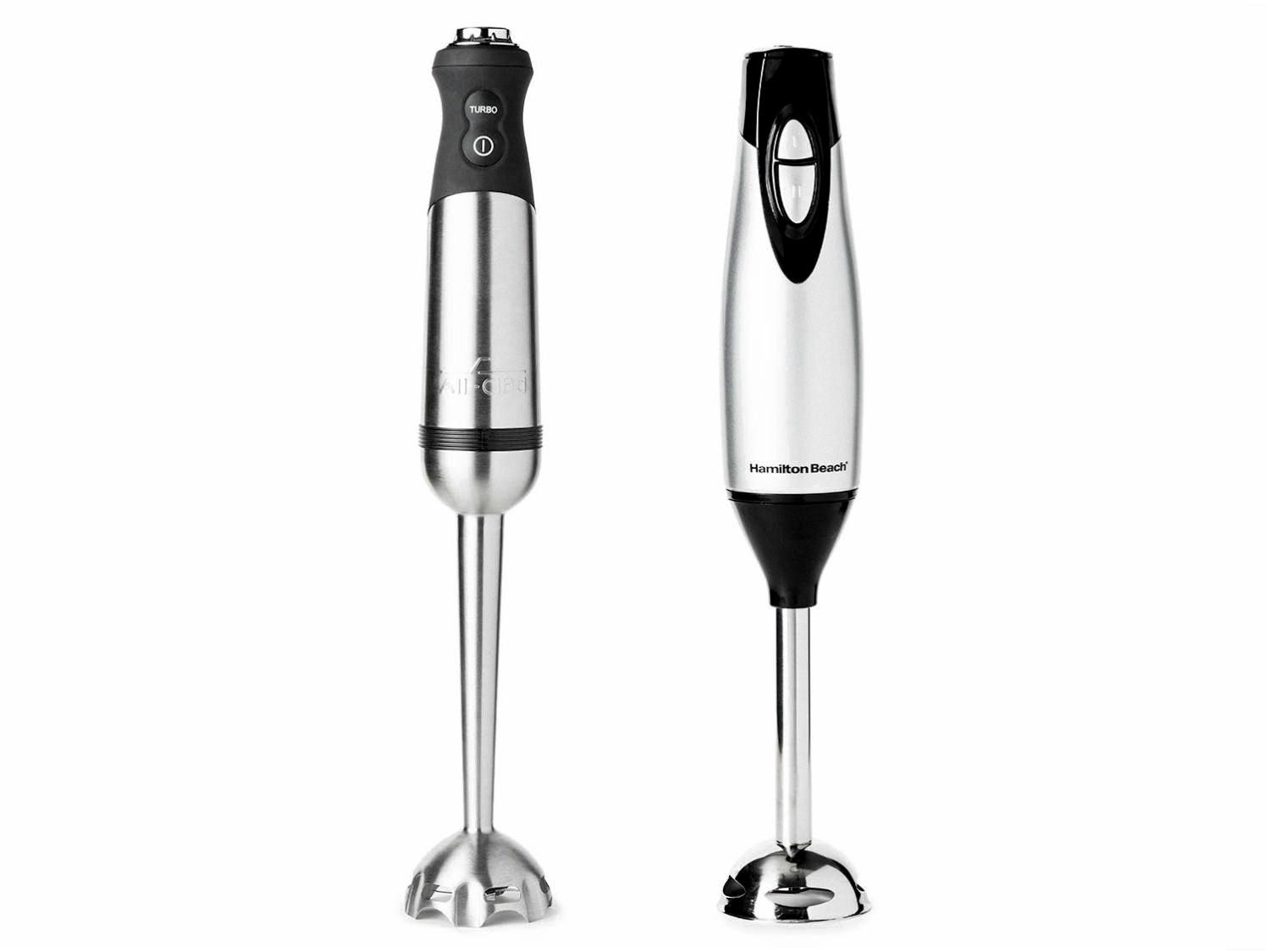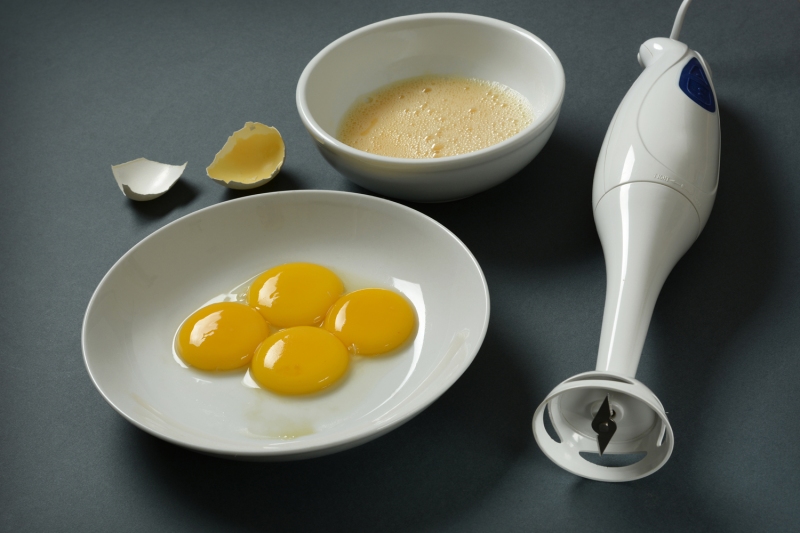When it comes to prepping delicious meals, eggs are a classic and versatile ingredient. From scrambled eggs to omelettes, quiches and frittatas, eggs can be cooked in a variety of ways. But before you start cooking with them, you need to know how to properly beat or whisk them. While the traditional method of using a whisk or hand mixer works great, many home cooks are turning to immersion blenders as an alternative way of beating or whisking eggs.
So can you beat eggs with an immersion blender? The answer is yes! An immersion blender is a handy kitchen tool that allows you to blend ingredients directly into the bowl without hving to transfer them into a separate container. It also eliminates the need for bulky stand mixers and whisks. Plus, it’s much easier to clean up since there are no extra parts or attachments.
To use an immersion blender for beating eggs, start by cracking the desired number of eggs into a bowl and adding any desired seasonings such as salt and pepper. Then submerge the head of your immersion blender completely into the mixture and turn it on high speed for about 30 seconds until all of the ingredients are completely homogenous and pale yellow in color. Make sure not to over-mix as this could result in rubbery egg whites.
Although an immersion blender is great for quickly beating eggs, it isn’t as powerful as traditional hand mixers or stand mixers so it may not hold up well when used with harder items such as frozen foods or ice over time. That said, if you’re looking for light airy batters like meringue or whipped cream then using your immersion blender may be more efficient than using a hand mixer since its double whisks can whip up fluffy clouds much faster than an immersion blender can on its own.
In conclusion, yes – you can beat eggs with an immersion blender! This handy kitchen gadget will not only save you time but also has fewer parts which makes it easier to clean up after use. Plus, its powerful motor allows you to quickly whip up light cloud-like batters like meringues in no time at all!
What Not to Use an Immersion Blender For
Immersion blenders are best suited for tasks such as blending soup, sauces, and smoothies. They should not be used for harder items such as frozen fruits and vegetables, ice cubes, or any other hard ingredients. The motor and blade of an immersion blender are not designed to handle these types of foods over time and may not work as efficiently or effectively. Additionally, using an immersion blender on harder items could potentially cause it to break or become damaged.

Source: amazon.com
Using an Immersion Blender as a Substitute for a Whisk
No, an immersion blender is not a suitable substitute for a whisk. While an immersion blender can be used to mix cake batter or whipped cream, it does not have the same double whisks that a hand mixer has which allow for a faster and fluffier result. Furthermore, an immersion blender will not incorporate as much air into the mixture as a hand mixer would, resulting in denser cakes and less airy cream.
Can You Whip Egg Whites With an Immersion Blender?
Yes, you can whip egg whites with an immersion blender. To do so, make sure to use the whisk attachment that comes with your blender. Begin by adding your egg whites into a bowl and then insert the immersion blender and start blending in an up-and-down motion on high speed until your egg whites bcome fluffy. If you find that they are not becoming as fluffy as you would like, add a pinch of cream of tartar or sugar to help stabilize the foam. Once they have reached the desired fluffiness, you can use them to make meringue for your pies or other recipes.
Can an Immersion Blender Be Used to Scramble Eggs?
Yes, you can use an immersion blender to scramble eggs. To do so, crack the eggs into a medium bowl and add a pinch of kosher salt. Then, using the immersion blender, blend the eggs until they are completely homogenous and pale yellow in color, which should take around 30 seconds. The immersion blender will create small curds that will resemble the texture of scrambled eggs.
The Benefits of Using an Immersion Blender
Immersion blenders are great for quickly blending liquid ingredients and emulsifying sauces, such as mayonnaise or pesto. They can also be used to make small batches of smoothies, baby food, dips, and even whipped cream. They are not suitable for heavier tasks and usually won’t produce a perfectly smooth result.

Source: southernliving.com
Can an Immersion Blender Be Used as a Food Processor?
An immersion blender is not designed to be used in the same way as a food processor but can still be used in a similar way. It is best suited for blending, puréeing and emulsifying liquids and soft ingredients. To use an immersion blender as a food processor, you can chop vegetables or fruits by pulsing them with the immersion blender on low speed. You can also use it for mixing and kneading dough, though it will take some practice to get the rght consistency. Keep in mind that an immersion blender is not able to achieve the same results as a food processor, so it may not be suitable for more complex tasks like grating cheese or making nut butter.
Can an Immersion Blender Whip Milk?
Yes, an immersion blender can be used to whip milk. To do this, pour hot milk into a narrow container with high sides so that the milk covers the head of the immersion blender. Run the blender for 1-2 minutes or until the milk has developed a frothy foam. This method is more effective than using a whisk or other hand tools to achieve the same result.
Can an Immersion Blender Achieve Stiff Peaks?
Yes, you can get stiff peaks with an immersion blender when used with a whisk attachment. The whisk attachment allows you to quickly whisk ingredients like eggs and cream in order to create stiff peaks. This is perfect for making whipped cream or meringues.
Can an Immersion Blender Create Foam or Froth?
Yes, an immersion blender can froth milk. To do this, warm the milk in a large, deep pot. Then, place the immersion blender in the milk and make sure the blades are submerged. Turn the blender on low and blend until you achieve a frothy texture. Note that using an immersion blender to froth milk can be quite messy!

Source: seriouseats.com
The Fastest Way to Whip Egg Whites by Hand
The fastest way to whip egg whites by hand is to start with room temperature egg whites, as this will help the whites reach stiff peaks more quickly. To hasten the process, place the bowl of egg whites in a bowl of hot water for a few minutes before beginning. Begin whisking vigorously with a balloon whisk, swishing it back and forth to break up the whites until they become foamy. Then, increase your speed and continue whisking in a circular motion until the egg whites reach stiff peaks.
Troubleshooting Egg Whites That Won’t Whip to Stiff Peaks
Your egg whites won’t whip to stiff peaks if there is any trace amount of grease or egg yolk in the whites. Grease and yolk can interfere with the proteins in the egg whites forming strong bonds and creating a stable meringue. To ensure your whites will whip correctly, be sure to clean and dry your bowl, beaters, and spatula thoroughly bfore beginning with hot, soapy water. Additionally, be sure to separate egg whites from their yolks carefully so that no traces of yolk are left behind in the whites. Following these steps will help ensure that you get perfect stiff peaks every time!
The Best Tool for Scrambling Eggs
The best tool to scramble eggs with is a whisk. A whisk will help you quickly and easily combine the yolks and whites of the egg, while also allowing you to break up any larger chunks of yolk. Whisking your eggs will create a light, creamy texture that is ideal for making scrambled eggs. Additionally, usng a whisk will help avoid over-cooking your eggs, which can lead to rubbery or dry results. With a simple up and down motion, you can easily incorporate air into the mixture for fluffier scrambled eggs. So grab your whisk and get cracking for the most delicious scrambled eggs!
Does Blending Eggs Affect Protein Content?
No, blending eggs does not destroy protein. Blending eggs can help break down the egg’s proteins into smaller pieces, which may make them easier to digest and absorb. However, the amount of protein in an egg is still the same whether it is blended or not. Blending eggs can also make them easier to add to recipes or drinks, so you may be able to get more out of your eggs in terms of nutrition if you blend them.

Conclusion
Eggs are a versatile ingredient that can be used in a variety of dishes, from sweet to savoury. Whether you’re whisking, blending, or beating them, eggs are sure to add flavor and texture to your meals. When it comes to whisking eggs, an immersion blender is a great choice if you’re looking for something more powerful than a hand mixer. With an immersion blender, you can whip up fluffy egg whites and make the perfect meringue for pies and other desserts. Whichever tool you use, just make sure to add some salt to your eggs firt – it helps create a light and airy texture!
